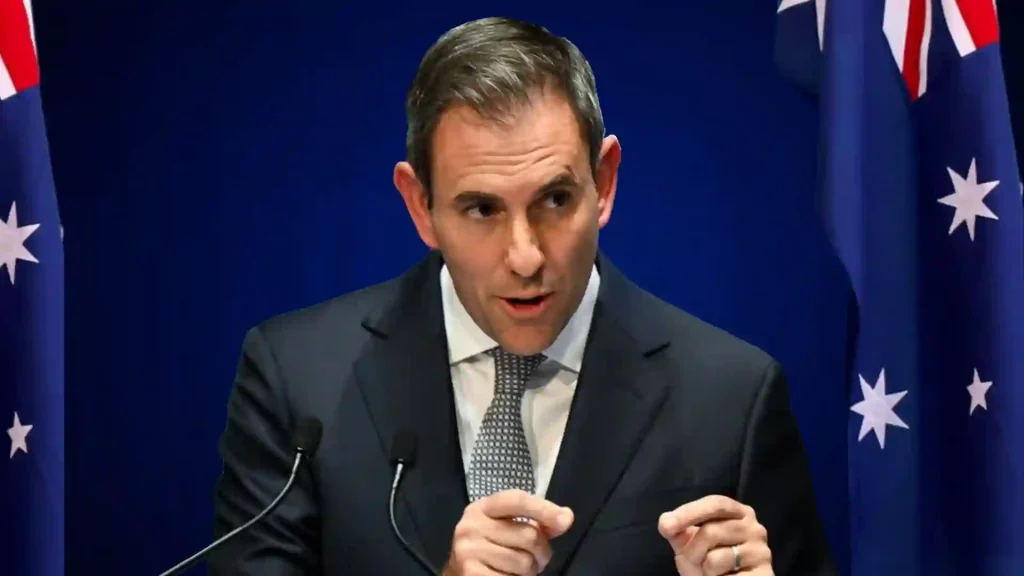The Australian government has the determination to “make the most of defining decade ahead”, and it begins with this Budget, stated Chalmers.
Australian Treasurer Jim Chalmers delivered his second budget, forecasting a surplus this year. While delivering the budget, Jim Chalmers mentioned the challenges the global economy is facing and how these disruptions affect Australia. “Australians have shown resilience in the face of heightened global uncertainty, persistent inflation, and higher interest rates, which are combining to slow our economy,” stated Mr. Chalmers.
Increasing commodity prices and low unemployment rates have reinforced the bottom line but Jim Chalmers warns that tougher days are still a possibility. The newly announced budget introduced a cost-of-living package worth nearly $15 billion forms the highlight of the Albanese government’s first yearly budget. The Australian government has the determination to “make the most of defining decade ahead”, and it begins with this Budget, stated Chalmers.
Budget Highlights
- Cost-of-living measures
The $15 billion cost-of-living package will help lower inflation, according to the Treasurer. Treasury forecasts an increase in electricity prices by 10 percent and gas prices by 4 percent in the next financial year, which is lower than the October forecast. The federal government will spend $1.5 billion on energy bill relief, by cooperating with states and territories in order to offer one-off bill deductions of up to $500 for 5 million households. The budget also included a change in the Pharmaceutical Benefits Scheme which will reduce the cost of medicines by half for people with chronic illness.
- Backing the most vulnerable
More than 900,000 Australians on JobSeeker will receive an extra $40 a fortnight. This will bring the fortnightly payment for a single person without any children to $730 a fortnight. “The majority of people aged 55 and over on JobSeeker are women, many with little to no savings or superannuation, and who are at risk of homelessness,” the treasurer said.
The government had already announced an expansion of single-parent payment, of which more than 90 percent of recipients are women. Renters on government support will also get a raise as the government increases the maximum rate of Commonwealth Rent Assistance by 15 percent. A $250 million support package, which was announced earlier this year is also explained. The funding will go toward the infrastructural development projects.
- Real Wage Growth
The unemployment rate is inclined to be 3.5 percent toward the end of this financial year. Unemployment is expected to stay longer and is projected to reach 4.5 percent in June 2025. Workers will have to wait another year to see an increase. The government is giving a 0.75 increase in real wages in the first half of next year and had made no changes to contentious stage-3 tax cuts, which could come into effect next July.
- Improved Budget Bottom Line
The budget bottom line had improved on the back of high commodity prices and low unemployment. The low unemployment rate helps the budget’s bottom line in two ways with fewer people receiving unemployment benefits and more people paying personal income tax. The budget forecasts a surplus in this financial year of $4.2 billion. A $14 billion deficit is forecasted for next year, which experts think could become a surplus if the Russia-Ukraine war keeps commodity prices high.
- Acknowledging the Housing Crisis
Jim Chalmers announced new tax breaks for investment in build-to-rent housing to encourage more supply in the market. The government in its October budget, announced a Housing Accord that promised to build one million homes and Chalmers has given time till next month to state and territory leaders to come up with ways to advance plans, so homes are built faster. The highest rates of the Commonwealth Rent Assistance program are being raised by 15%. This is the largest increase in more than 30 years, stated Chalmers.
- Cheaper Childcare Package
More than one million families are expected to benefit from the government’s cheaper childcare package. This has cost $55.3 billion in total subsidiaries over the next four years and has also been passed through the parliament. The subsidy rate will be increased to 90% for families who have a combined income of $80,000 or less.
The Big Picture
Many of the measures introduced are items dedicated to nation-building. More than $4 billion will be spent on expanding the Australian defense force capabilities and $9 billion that has been slated for the Aukus nuclear-powered submarine project. The budget also includes measures to fund The National Anti-Corruption Commission $262.6 million over four years. With the increasing cost of aged health and care and falling commodity prices, the budget is expected to face a black hole in coming years, along with the threats of recession, reports Forbes.
